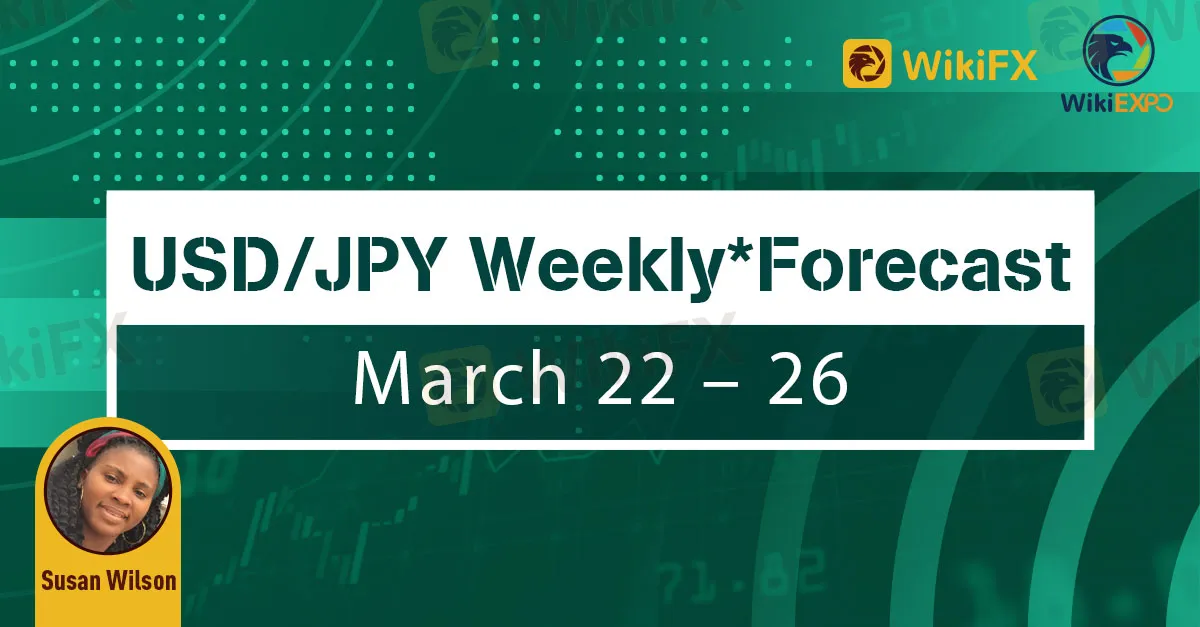简体中文
繁體中文
English
Pусский
日本語
ภาษาไทย
Tiếng Việt
Bahasa Indonesia
Español
हिन्दी
Filippiiniläinen
Français
Deutsch
Português
Türkçe
한국어
العربية
USD/JPY Weekly Forecast: March 22 – 26
Abstract:USD-JPY Weekly Forecast: There is no walloping from bond yields

USD-JPY Weekly Forecast: There is no walloping from bond yields
BANK OF JAPAN makes no variations in rate policy or bond purchases.
BANK OF JAPAN extends range on lasting rates to 0.25% about zero.
Fed stands perfectly but the US yield curve continues to plummet.
United States 10-Year Treasury yield climbs above 1.7%, a 14-month peak.
Central banks subjugated the market news this week but US yields overtook the action.
The USD-JPY has fused during the last couple of weeks. After increasing by 6% from its low at 102.70 on 5th January to 108.90 on 8th March, the final ranges have been less than a numeral, from 108.38 to 109.13.

USD-JPY Overview
Treasury rates remain to control trading and make available the logic for the USD-JPY. The advanced shift of the US yield curve short of a harmonizing change in Japan has put the yen on the risky self-protective with the piercing losses after the fall of 2017. The feebler yen will support the Japanese economy to recuperate from the COVID-19, hence the contentment of the BANK OF JAPAN, which has avoided its customary caution about swift currency activities.
Prospects for enhanced US economic development are in arrears the increase in Treasury yields and while those predictions, with that of the Fed, seem accurate, data is missing.
Next week, Durable Goods Orders for February will possibly approve the Retail Sales decline, starved of providing new information.
USD/JPY Technical
Technical guesses show the USD-JPY has decent support at 108.50 and 107.90. Instantaneous obstacles at 109.35 and 109.65 are weedy. The early COVID-19 drop and retrieval from late February - late March 2020 will provide a slight break one way or the other.
It is the route of US Treasury yields, principally the 10-year which has welcomed ample concerns recently, that should take the USD-JPY higher. US economic data marks time this week. The glowing predictions on US growth will outlive at least the next payroll statement on April 2.
With the US Federal Reserve ostensibly joyful or, at least lenient of increasing Treasury and commercial yields and the BANK OF JAPAN silently delighted, the route of the USD-JPY is higher. However, even under this vital push, the lengthier the pair lingers without new peaks, the more the test for traders to schedule some of those gains. Any drop would be provisional and restricted by support, including the 23.6% Fib at 107.64. The USD-JPY traded overhead 110.00 for much of 2018 and 2019 so there is no primary cause that if US rates continue to increase; it could not decline to those levels.
The RSI at 73.68 is somewhat overbought and enhances weight to a profit deterioration but is not a bearish indicator.
Resistance: 109.35, 109.65, 110.00
Support: 108.50, 107.90, 107.35, 107.00

USD-JPY Sentimental Overview
With the speedy climb of the duo this year, technically stimulated profit-taking is a typical postulation. If or if not, this happens hinges on US yields. If US Treasury rates continue to increase, they will push the USD-JPY higher. If not, let the profit-scheduling commence.

Disclaimer:
The views in this article only represent the author's personal views, and do not constitute investment advice on this platform. This platform does not guarantee the accuracy, completeness and timeliness of the information in the article, and will not be liable for any loss caused by the use of or reliance on the information in the article.
Read more

Key Forex Strategies
New to forex trading and looking for simple and effective trading strategies? We got you covered! In this quick guide, we'll explain some of the key forex strategies which are easy to digest. So, let's start!

Fundamental vs Technical Analysis
Fundamental and technical analysis play some of the most influential and critical roles in making trading decisions amongst traders today. They are widely accepted by stock, foreign exchange, indices and cryptocurrency traders worldwide. Traders use either or both of the methods to make key trading decisions in their respective markets.

Going Short of JPY Is Boosted by Yellen’s Remark on Interest-Rate Hikes Again
When interviewed by Bloomberg, Yellen, the U.S. Treasury Secretary, indicated that the USD 4-trillion budget released by Biden would be beneficial to America even if it may increase inflation and interest rates.

Brent oil is predicted of bullish repricing by Goldman Sach
According to Goldman Sachs' head of energy research, a nuclear deal between the U.S. and Iran could send energy prices higher - even if it means more supply in the oil markets. Talks are ongoing in Vienna between Iran and the six world powers - the U.S., China, Russia, France, U.K., and Germany - trying to salvage the 2015 landmark deal. Officials say there's been progress, but the conclusion of the negotiations remains unclear and oil prices have been soaring as a result.
WikiFX Broker
Latest News
High-Potential Investments: Top 10 Stocks to Watch in 2025
US Dollar Insights: Key FX Trends You Need to Know
Why Is Nvidia Making Headlines Everywhere Today?
Discover How Your Trading Personality Shapes Success
FINRA Charges UBS $1.1 Million for a Decade of False Trade Confirmations
Bitcoin in 2025: The Opportunities and Challenges Ahead
BI Apprehends Japanese Scam Leader in Manila
Big News! UK 30-Year Bond Yields Soar to 25-Year High!
SQUARED FINANCIAL: Your Friend or Foe?
Join the Event & Level Up Your Forex Journey
Currency Calculator






